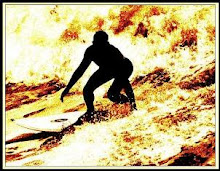In this chapter, I really appreciated Marshall McLuhan's Media Map of History. (p. 315)
There are four ages and one possible age. In order from oldest to newest, they are the Tribal Age, The Literate Age, the Print Age, the Electronic Age (present) and the Digital Age (future). The Tribal age was a era when the only base of media communication was by ear and the community. The Literate Age started when the Phonetic Alphabet was invented (2000-1500 B.C.). It was a visual era where most media communication was done by visuals and because "the eye is the dominant sense organ" (p. 316). The invention of the Printing Press in 1450 started the Print Age. The Print Age was also a visual era when a mass production of books "usher in the industrial revolution and nationalism, yet individuals are still isolated" (p. 316). The Electronic Age started when the Telegraph was invented in 1850. It is an era of "instant communication; a return to the global village with all-at-once sound and touch." (global village: a worldwide electronic community where everyone knows about everyone's business and all are somewhat testy.") (p. 317)
Lastly, there is the Digital Age, which hasn't started yet, and we don't know when it will or if it will. The digital age would be wholly electronic. It is defined as "a possible fifth era of specialized electronic tribes contentious over diverse beliefs and values." (p. 317) I think that there is a good chance we will go into a digital age, since there are so many electronic things replacing the old fashioned devices. I guess we just have to wait and find out.
[Watch *HD*] In the Heart of the Sea Full Movie
-
[Watch *HD*] In the Heart of the Sea (2015 Full Movie
[image: In the Heart of the Sea]
Based on the incredible true story that inspired Moby Dick
[image:...
6 years ago



No comments:
Post a Comment